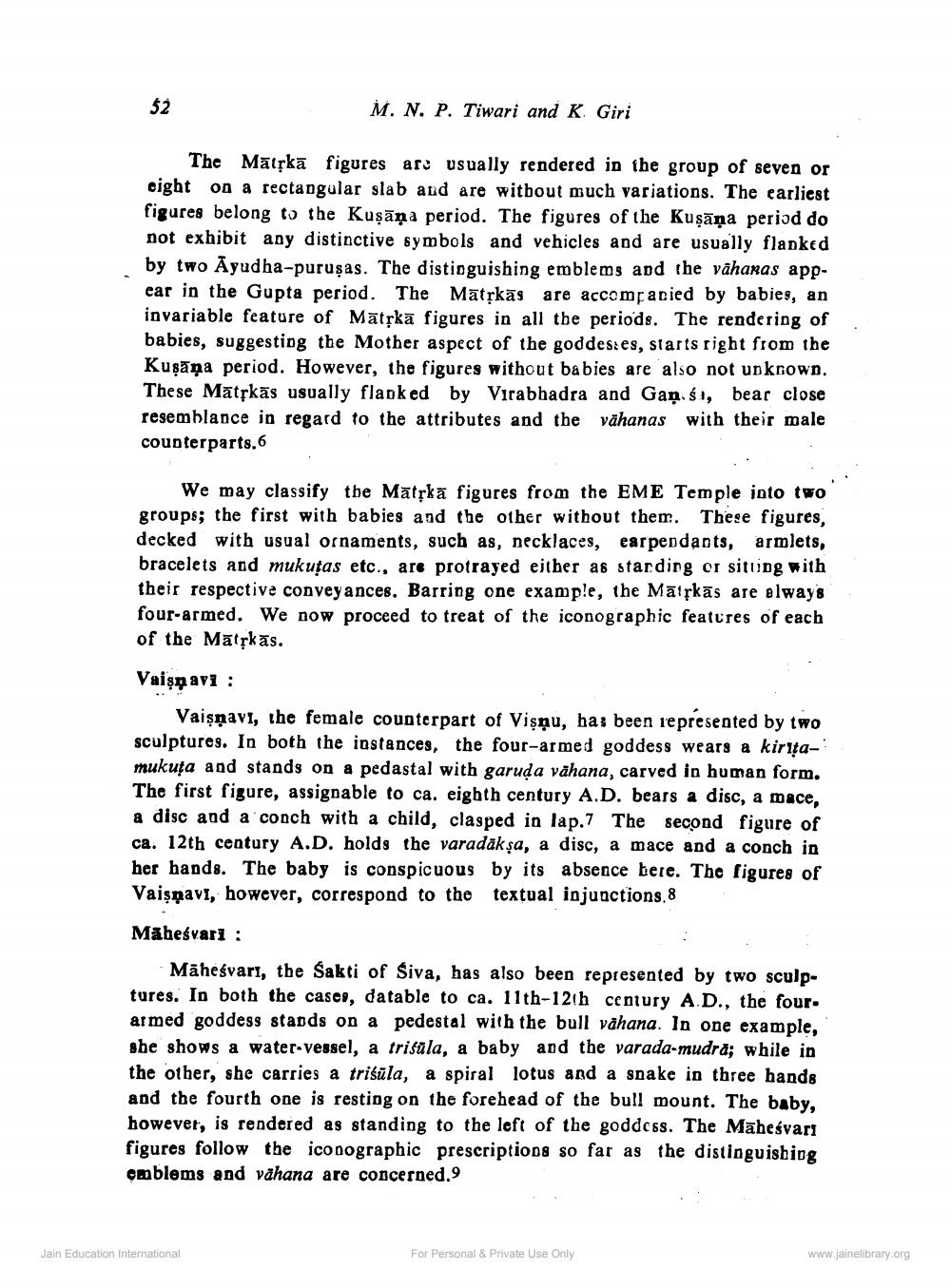________________
M. N. P. Tiwari and K. Giri
The Mātņkā figures are usually rendered in the group of seven or cight on a rectangular slab and are without much variations. The earliest figures belong to the Kuşāņa period. The figures of the Kuşāņa period do not exhibit any distinctive symbols and vehicles and are usually flanked by two Āyudha-puruşas. The distioguishing emblems and the vāharas appear in the Gupta period. The Mātrkās are accompanied by babies, an invariable feature of Mātrka figures in all the periods. The rendering of babies, suggesting the Mother aspect of the goddesses, starts right from the Kuşāņa period. However, the figures without babies are also not unknown. These Mātskās usually flanked by Virabhadra and Gaņ śi, bear close resemblance in regard to the attributes and the vähanas with their male counterparts.6
We may classify the Mātrkā figures from the EME Temple into two groups; the first with babies and the other without them. These figures, decked with usual ornaments, such as, necklaces, earpendants, armlets, bracelets and mukuțas etc., are protrayed either as starding or situng with their respective conveyances. Barring one example, the Mālpkās are always four-armed. We now proceed to treat of the iconographic features of each of the Mātrkās.
Vaişşavi :
Vaişşavi, the female counterpart of Vişņu, has been represented by two sculptures. In both the instances, the four-armed goddess wears a kirițamukuta and stands on a pedastal with garuda vähana, carved in human form. The first figure, assignable to ca. eighth century A.D. bears a disc, a mace, a disc and a conch with a child, clasped in lap.7 The second figure of ca. 12th century A.D. holds the varadakşa, a disc, a mace and a conch in her hands. The baby is conspicuous by its absence bere. The figures of Vaisnavi, however, correspond to the textual injunctions. 8
Mäheśvari :
Māhesvari, the Sakti of Siva, has also been represented by two sculptures. In both the cases, datable to ca. 11th-12h century A.D., the four. armed goddess stands on a pedestal with the bull vähana. In one example, she shows a water-vessel, a trisala, a baby and the varada-mudra; while in the other, she carries a triśūla, a spiral lotus and a snake in three hands and the fourth one is restiog on the forehead of the bull mount. The baby, however, is rendered as standing to the left of the goddess. The Māheśvari figures follow the iconographic prescriptions so far as the distinguishing oblems and vähana are concerned.9
Jain Education International
For Personal & Private Use Only
www.jainelibrary.org




